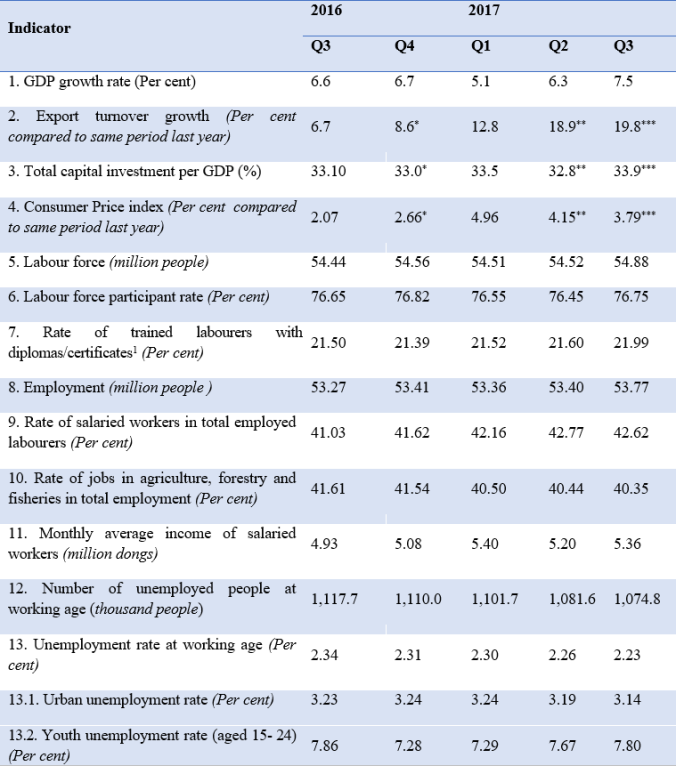11 July, 2019
The Comprehensive and Progressive Agreement for Trans-Pacific Partnership is expected to have significant effects on the Vietnamese labour market in the months to come. Nguyen Thi Huong, lawyer at LNT & Partners – Leading Law Firm 2014 by Legal500 Asia Pacific – provide deep analysis into the issue, given a possible new investment inflow from member countries.
Vietnam is considered to be one of the attractive consumer markets in the region to investors from the agreement’s (CPTPP) member nations thanks to a population of about 100 million people, with 60 per cent of the young labour force, and increasing incomes.
Commitments in the CPTPP are at the core of reducing tariff barriers, implementing the principle of equality and freedom in trade, ensuring free movement of goods, services, capital and technology, facilitating trade and investment, and creating new opportunities for employees.
According to information from the World Trade Organisation, there are nearly 1,800 Japanese enterprises producing and doing business in Vietnam. This estimate continues to increase at a time when Vietnam has started to implement the CPTPP. Similarly, with trade promotion and also considering Canada as an important partner in the North American continent, Vietnam also expects a new wave of investment from Canada.
Investors from Australia, Singapore, and Malaysia have had a tradition of investing in Vietnam before, and as the CPTPP takes effect, capital from these investors will continue to pour into the country. With investment commitments and opening up stronger service markets, the CPTPP will boost investment flows from countries with little investment in Vietnam currently, such as New Zealand, Mexico, and Chile.
The agreement will bring new employment opportunities for Vietnamese labours too. On the other hand, the labour faces tough challenges as the CPTPP regulations take hold.
On the state management side, on January 20 the government issued Decision 121/QD-TTg approving the plan for implementing the CPTPP.
Accordingly, for commitments in labour, ministries and committees are providing training to officials of the state management agency regarding specific commitments involved in the CPTPP, ensuring that they understand correctly and thereby helping to enforce the agreement fully and effectively.
The legal system will be improved to adjust labour relations and labour standards in accordance with international standards, commitments and conventions. Furthermore, the Labour Code 2012 will be modified in accordance with the roadmap stipulated in the CPTPP.
Opportunities and challenges ahead
Based on the latest data of the Ministry of Labour, Invalids and Social Affairs’ (MoLISA) on the Vietnamese labour market, half of the labour force takes up jobs in agriculture. The number of labourers with diplomas and certificates only account for roughly one-fifth among the labour force. This means that the majority of Vietnam’s workforce is made up of unskilled workers.
Labour standards will be required to be higher due to equality legislation being one of the factors in implementing equality in trade.
By participating in the CPTPP, Vietnam has agreed to follow the commitments covered in Chapter 19 regarding labour. The agreement includes two requirements for the labour market; one involves the labour standards referred to the ILO issued in 1998, and the other one is on acceptable conditions of work.
The CPTPP contains specific requirements on labour rights and work conditions to ensure that the free flow of trade will contribute to sustainable development, and enable workers and businesses to enjoy their fair share of economic gains, according to the International Labour Organization (ILO).
Vietnam, as a member of the ILO, is bound to respect ILO standards, stipulated in the three core conventions related to the freedom of association, the right to collective bargaining, and the elimination of forced labour, child labour, and labour discrimination. However, Vietnam has yet to ratify the three core conventions. Since Chapter 19 on labour in the CPTTP is mainly based on the 1998 ILO Declaration, Vietnam is obliged to review and reform its law to adapt the new labour rights of employees.
Also, for the secondary requirements regarding acceptable conditions of work, Vietnam shall have to raise its current working standards for labourers. While this improvement of standards will help better protect labourers, it also leads to a rise in costs.
Low labour cost has always been one of the key factors that attracts FDI flow coming into Vietnam, as overseas investors still target labour-intensive industries that use unskilled workers at cheap cost. However, having to abide the CPTPP’s labour commitments, Vietnam will have to consequently raise its minimum wage, thus resulting in a race to the bottom in wages to attract foreign businesses. In order to preserve Vietnam’s position as a manufacturing hub, a shift in demand from unskilled workers to more qualified ones is inevitable.
For low-qualified workers, jobs that require unskilled employees or other entry-level jobs might be cut off significantly. Low-qualified workers have no choice but to either improve their skills, or remain out of the workforce.
For workers with skills, their situation is likely to remain unchanged with or without the labour commitments of Vietnam in the new agreement. This is because skilled workers are paid based on their working performance, unlike their low-skilled counterparts who have to rely on minimum wage.
Recruiting trends
As analysed above, commitments on labour in the CPTPP are equivocal and not quite open for foreign labour. Therefore, there is not much difference in the recruiting trend of international enterprises in Vietnam. With white-collar workers, enterprise shall recruit based on proficiency and talent of employees as usual.
On the other hand, it is a matter of fact that there may be a slight increase in demand of blue-collar workers. In particular, the CPTPP creates tax incentives in the form of exemptions or reductions among members, which encourages a huge amount of foreign products to be imported into Vietnam, encouraging more foreign investors to head to Vietnam for the purpose of production or branch establishment. For the long term, regardless of the development in technology and science, overseas enterprises may recruit more workers than ever before.
Table: Some main indicators of the economy and labour market

Source: GSO (2016, 2017), Quarterly Labor-Employment Survey and Statistical Data.
GSO (2017), Report on Socio-economic Status quarter 3, 2017.(*) all-year data; (**) data of the first 6 months; (***) data of the first 9 months.
[1] Including: primary level, secondary level, college level, university level and higher
For further information, please contact:
Dr. Net Le, Partner, LNT & Partners
net.le@lntpartners.com





